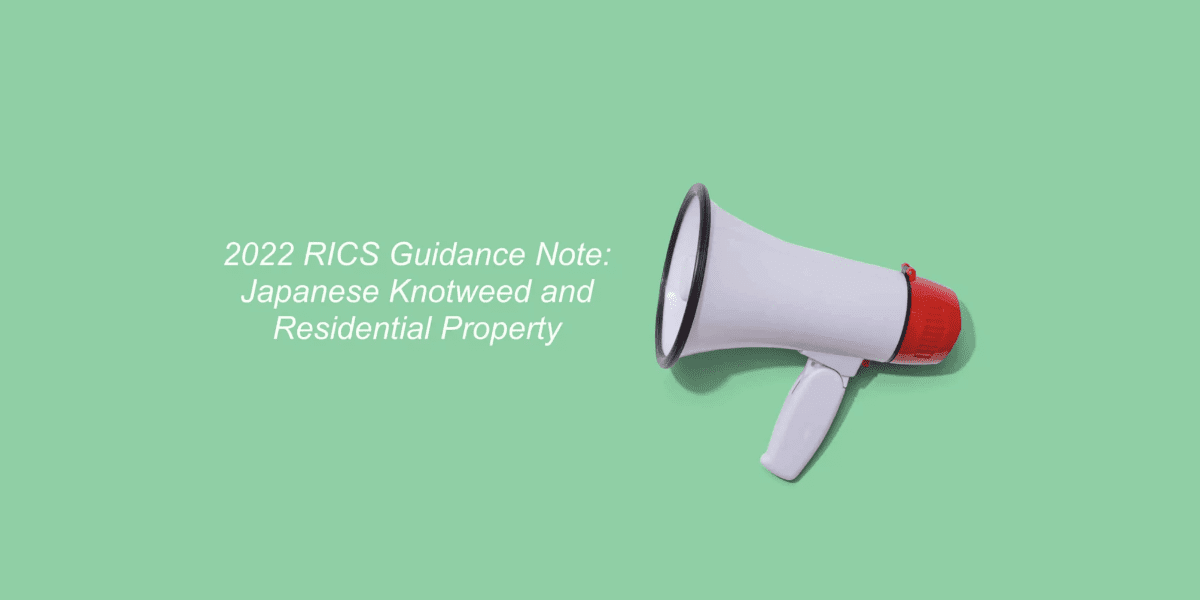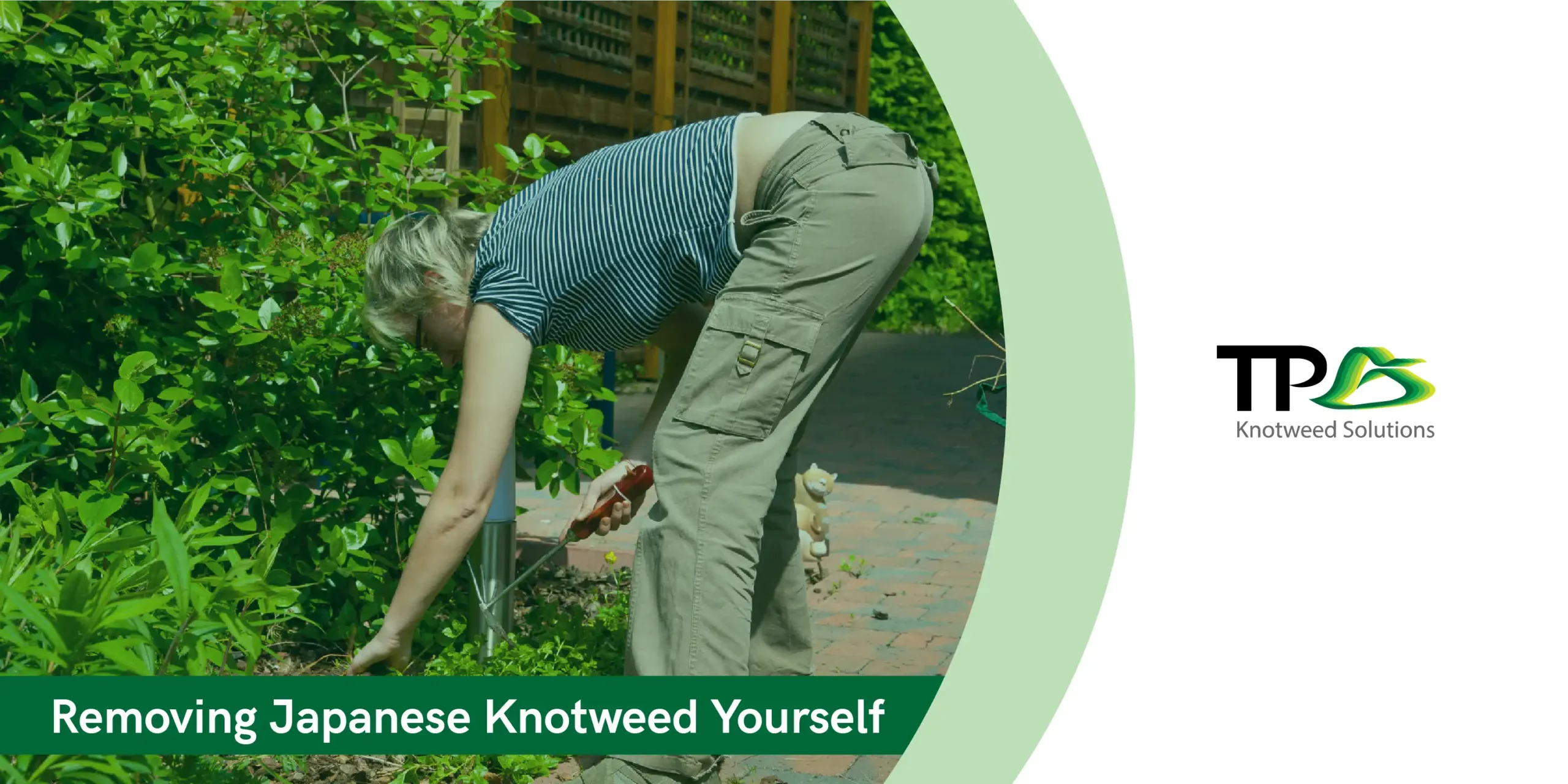The RICS Information Paper 2012 “Japanese knotweed and residential property” was originally introduced with the aim of helping residential surveyors understand the implications of a Japanese knotweed infestation on or near a dwelling, when undertaking surveys and valuations of residential property in the UK.
The original information paper was created with input from industry professionals and assessed the level risk to residential property posed by Japanese knotweed. A framework was established to assess this risk which consisted of four risk categories and focused primarily on the damage caused by this invasive plant, the distance to the property and on mortgage valuation.
This 2012 risk assessment took into account the real risk to a property and addressed some of the concerns of the lenders and insurance companies. The information paper took the Environment Agency’s ‘The knotweed Code of Practice’ into consideration, meaning the horizontal underground rhizome spread distance of 7 metres was the most suitable minimum measurement for the risk assessment.
There were four categories in total, with ‘Level 4’ being of greatest concern, requiring further investigations by an appropriately qualified person and ‘Level 1’ being the lowest risk level.
The 2012 RICS information paper became the new point of reference for surveyors, mortgage lenders, homeowners and invasive weed specialists, providing a sensible document that enabled lending for residential properties affected by the invasive plant Japanese knotweed.
Why has the 2012 RICS Information Paper been replaced?
In-depth research on Japanese knotweed has been ongoing since 2012, with further academic research into Japanese knotweed released in 2018, focusing on the actual damage caused by this invasive plant and the underground rhizome spread distance.
One research paper in particular ‘Fennell M, Wade M, Bacon KL. 2018. Japanese knotweed (Fallopia japonica): an analysis of capacity to cause structural damage (compared to other plants) and typical rhizome extension’ found that Japanese knotweed is not as destructive as some other plant species and that the underground rhizome network rarely extended more than 4 metres.
This research paper influenced and prompted a review of the 2012 RICS Information paper as it was felt that the ‘blunt 7-metre rule’ did not reflect the evidence collated.
The House of Commons Science and Technology Committee published a report in 2019 ‘Japanese knotweed and the built environment’ which involved the presentation of evidence from Japanese knotweed specialist companies, surveyors and industry professionals.
The outcome was that a much more nuanced and evidence-based risk framework was needed to reflect the latest thinking on the significance of Japanese knotweed, in relation to the size of the infestation, the distance from the property, and the potential risk of any damage.
This has ultimately resulted in the new 2022 RICS Guidance Note “Japanese knotweed and Residential Property”.
Who is the new RICS Guidance aimed at?
The primary objective of the updated guidance is to assist RICS surveyors who encounter Japanese knotweed during valuations or surveys of residential property in the UK. This guidance does not apply to commercial property. It is intended to help residential surveyors make a preliminary assessment and enable them to provide appropriate initial advice to their clients when carrying out a survey for mortgage lending or pre-purchase purposes.
According to the RICS “This guidance note provides a framework for RICS members to categorise infestations of Japanese knotweed and only briefly summarises the main methods of remediation. Further information about the identification and remediation of Japanese knotweed can be found in the publication by the Property Care Association, Japanese knotweed: Guidance for Professional Valuers and Surveyors, which deals with these important subjects in-depth”.
It is important to note that if Japanese knotweed is identified and seen to be affecting the property or amenity space, the recommendation will be to seek specialist advice from a recognised invasive weed specialist company such as TP knotweed Solutions. We will then be able to carry out a professional Japanese knotweed survey and recommend the most appropriate remediation measures, based on current and future plans.
What are the main changes?
The overcautious 7-metre rule has been removed, allowing surveyors to use their professional judgement to determine the potential impact of knotweed, in conjunction with the new guidance. The new guidance is to be used by surveyors for their lending assessments and provides them with guidance on how to assess the impact Japanese knotweed is having on a property.
The RICS state that “The new assessment process enables the valuer or surveyor to carry out a structured assessment that leads to an objective categorisation of any given infestation. The assessment utilises a decision tree and the accompanying notes form an integral part of the assessment process. The notes clarify and define the terms used in the decision tree, assisting the valuer, surveyor or other user to place the property being inspected in the appropriate Management Category”.
1. Risk Categories replaced by Management Categories
The RICS risk categories 1-4 (with 1 being least severe and 4 being the most), have been replaced with 4 management categories A-D, with A being the most severe.
2. Rhizome spread zone amended
It has been industry standard to include a 7-metre rhizome spread/ risk zone around a stand of Japanese knotweed within site plans, since 2012. This has now been removed and the new guidance/ assessment focuses on the area of visible growth within the subject property. It does however still reference a 3-metre rhizome spread zone when assessing Japanese knotweed within neighbouring properties.
3. Damage to structures
The new guidance and assessment flowchart/ tree asks a direct question on whether or not the Japanese knotweed is actually causing visible material damage to a structure.
4. Assessing impact on amenity space
Unlike the 2012 guidance, the new assessment now places a focus on amenity space and asks if Japanese knotweed is likely to prevent use of or restrict access to amenity space. Typically, lawns, patios, paths, driveways, hardstandings, etc. are included in this definition.
5. Assessing Japanese knotweed on adjoining land
The guidance still places importance on Japanese knotweed within adjoining land. The key figure is now 3m metres beyond a property boundary line as the distance within which a mortgage valuer/ surveyor should report Japanese knotweed to a lender. Based on the latest research, 3m has been agreed as the most appropriate distance to adopt. If the mortgage valuer/ surveyor identifies Japanese knotweed further than 3m beyond the property boundary, it does not need to be reported to the lender, however it is recommended that a brief note of the observation is made.
For more mature and well-established Japanese knotweed infestations, further than 3m from a property boundary, showing no signs of effective treatment by the adjoining owner, this may raise concerns about the possibility of a serious impact on the future value and saleability of the subject property.
6. Lending advice
This new document is focused on advising lenders on the risks posed to residential property by the invasive plant Japanese knotweed. Each of the 4 management categories A-D provides specific advice to lenders and also includes an indication of whether or not a mortgage retention is required or not.
FACT FINDER: Still unsure how this impacts you? See below:
Question: Do I still need to declare that I have Japanese knotweed in my garden when I sell my house?
Fact: Yes, this remains unchanged, and you, therefore, need to legally declare if your property is affected by Japanese knotweed. The Law Society TA6 Property Information Form still applies and has a specific question on Japanese knotweed that must be answered correctly. If Japanese knotweed is present at the property, is it highly likely that you will need to provide evidence of a suitable treatment programme with a 10-year Insurance Backed Guarantee, before selling your property.
Question: The newspapers have reported that Japanese knotweed is no longer a problem, so can I just ignore the plant or treat it myself?
Fact: Some of the newspapers and media have been falsely stating that Japanese knotweed is no longer an issue for homeowners. It is important to note that Japanese knotweed is still a Schedule 9 invasive plant and although the overall risk posed by the plant has been lowered due to further research, the guidance still recognises that Japanese knotweed poses a risk to homeowners and lenders.
It is therefore still just as important that you engage the services of a Japanese knotweed specialist who can carry out the necessary surveys and provide detailed, factual advice and guaranteed treatment based on your individual situation. Self-treatment is possible over time however as detailed above, when you come to sell your property, it is highly likely that you will need to provide evidence of a professional knotweed management plan with a 10-year guarantee, as part of the conveyancing process.
Summary
Overall TP knotweed Solutions feel that the new RICS Japanese knotweed guidance note is accurate and sensible, providing detailed and pragmatic guidance to mortgage valuers/ surveyors, but still recognising the threat Japanese knotweed poses within the built environment and surrounding amenity spaces.




